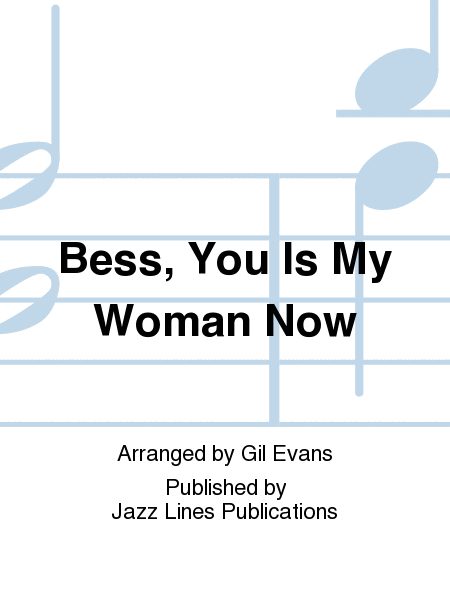Bess, You Is My Woman Now
As Recorded by Miles Davis and Gil Evans on 1958's Porgy and Bess
-
Ships in 2 to 3 weeks
Details
Description
SKU: JL.JLP-7552S
As Recorded by Miles Davis and Gil Evans on 1958's Porgy and Bess. Edited by Dylan Canterbury, Rob DuBoff, and Jeffrey Sultanof. Arranged by Gil Evans. Range: Trumpet 1: C6; Trombone 1: Cb5. Ballad. Score. Published by Jazz Lines Publications (JL.JLP-7552S).Bess, You Is My Woman Now' is a crucial plot point in George and Ira Gershwin's opera 'Porgy and Bess;' it serves as the moment when the title characters admit and embrace their love for one another. Gil Evans's arrangement for Miles Davis creates a lushly textured atmosphere that still pays reverence to the tenderness of the original piece. The arrangement opens with the trumpet soloist "singing" the verse over the top of some soft, textural backgrounds in the woodwinds and horns. After a brief tuba and bass interlude, the melody begins at measure 16. Throughout this section, it is of utmost importance for the ensemble to observe all dynamics in order to not overwhelm the soloist. The melody continues at measure 24 with some subtle double-time background figures that set up an all-out double time feel in the ensemble at measure 32. The double time feel concludes at measure 36, where a key change re-introduces the trumpet soloist. Once again, it is important for the ensemble to play underneath the soloist throughout this section. A shift in both key and time signatures at measure 48 returns the orchestra to the introductory verse, which should be approached with just as much subtlety and intimacy as it was at the beginning. The emotional climax of the arrangement begins at measure 56, where the full ensemble takes over the melody briefly, reaching the loudest dynamic level of the entire arrangement. After a brief statement from the trumpet soloist, the orchestra gradually tapers off to a barely audible level for the final rubato statement from the trumpet soloist. Things finish up on a surprisingly ominous note, with the trombones setting up the next movement with an almost funereal chorale at measure 77.

 Share
Share